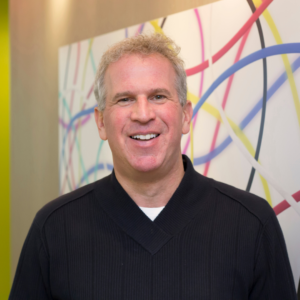Aging baby boomers and Blue Ocean opportunities
This past January, The Erickson School convened a symposium in Ft. Myers, Fla., titled: “Look who’s aging: Person centered services and the new normal. More than 50 leaders in aging services from around the country attended and spent three sunny days listening and talking with a panel of nationally known experts to learn how to identify the Blue Ocean1 in person-centered aging for the future of aging services.
The symposium was based on our belief that the coming cohorts of aging persons—the baby boomers—will want to age and thrive in ways that continue to afford them opportunities to grow as individuals who are important contributors not just to their own constant personal reinvention, but to their families, society and the world.
They will be the generation who will not only not “go gently into that good night,” but will insist on living long and well, while using what they learned during the turbulent decades of their youth and adult years to keep developing and redefining who they are. Moreover, we learned that they will not all be wealthy and self-indulgent versions of their adolescent selves, as predicted in oversimplified, stereotyped portrayals.
The takeaway for those who want to prosper in the coming “silver tsunami” was that a new consciousness about aging is taking place that threatens to make obsolete our current gap-filled model of businesses and services that arose to serve the boomers’ parents and grandparents. We are on the cusp of another generational conflict that has its roots in a different mentality.
As in the past, when boomers redefined every era of development they entered, this time it will be about aging. Psychiatrist Robert Jay Lifton2 notes neurologist Ortega y Gasset’s concept that each generation that shares the same historical era creates different mentalities at the “same historical moment which causes ‘an internal lack of equilibrium’” in society.
Sociologist C. Wright Mills concept that individual experience happens at the intersection of biography and history3 provides a similar insight to enlighten us about the fact that the “silver tsunami” is not just a demographic reality—it represents the coming of age of generational unrest, Ortega y Gasset’s “internal lack of equilibrium” that manifests itself as significant change of mind about what kind of aging people will want.
That is why the symposium looked at many of the new research and realities that will inform how companies can help identify Blue Ocean opportunities for person-centered services that will succeed because they will promote ways individuals can age well in community—what the boomer mentality wants the “new normal” to be.
Blue Ocean opportunities for the Baby Boom generation and beyond will be created in uncontested market spaces where, as of yet, there is no competition. Those who continue to operate as if the Greatest and Silent generations will keep coming and use their services forever will find themselves in the red ocean of cutthroat competition for a shrinking customer base and dwindling funds.
On the other hand, companies who see long-term living as a chance to mobilize what we know about the range of boomer preferences that are the core of person-centered aging will find the Blue Ocean of opportunity.
We learned that there is much more to be done and plan to continue this conversation next January.
REFERENCES
- Kim WC, Mauborgne R. Blue ocean strategy: How to create uncontested market space and make the competition irrelevant. Boston: Harvard Business School Press, 2005.
- Lifton RJ. Witness to an extreme century: A memoir. New York: Free Press, 2011.
- Mills CW. Sociological Imagination.Oxford: Oxford University Press, 1959.
I Advance Senior Care is the industry-leading source for practical, in-depth, business-building, and resident care information for owners, executives, administrators, and directors of nursing at assisted living communities, skilled nursing facilities, post-acute facilities, and continuing care retirement communities. The I Advance Senior Care editorial team and industry experts provide market analysis, strategic direction, policy commentary, clinical best-practices, business management, and technology breakthroughs.
I Advance Senior Care is part of the Institute for the Advancement of Senior Care and published by Plain-English Health Care.
Related Articles
Topics: Advocacy










